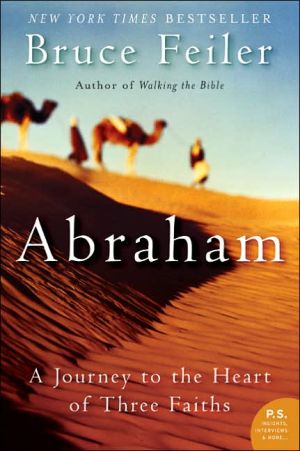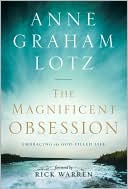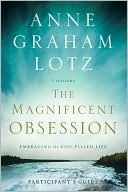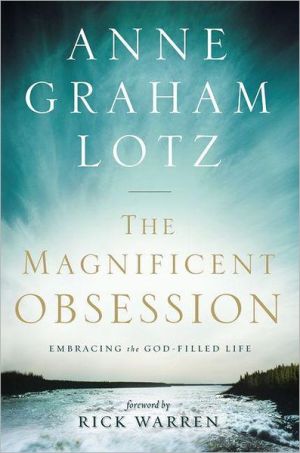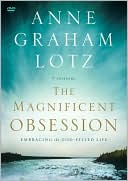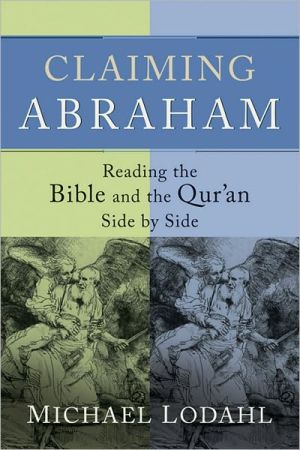Abraham: A Journey to the Heart of Three Faiths
In this timely, provocative, and uplifting journey, the bestselling author of Walking the Bible searches for the man at the heart of the world’s three monotheistic religions—and today’s deadliest conflicts. At a moment when the world is asking “can the religions get along?” one figure stands out as the shared ancestor of Jews, Muslims, and Christians. One man holds the key to our deepest fears—and our possible reconciliation. Abraham is that man. Bruce Feiler set out on a personal quest to...
Search in google:
In this timely, provocative, and uplifting journey, the bestselling author of Walking the Bible searches for the man at the heart of the world's three monotheistic religions -- and today's deadliest conflicts. Book Magazine Feiler's 2001 bestseller, Walking the Bible, took readers on a spiritual tour through the lands of the Bible. Its sequel is a spiritual biography of Abraham, the father of the three great monotheistic religions. Jews, Christians and Muslims all trace their origins to Abraham, who, as the story goes, led his family out of Mesopotamia and into Canaan (possibly in the early second millennium B.C.) and, during the journey, had several decisive encounters with God. God's outrageous requests—like asking Abraham to sacrifice his son—are, in the holy books that recorded them, templates for faith. Over time, each tradition has reinvented the patriarch to serve its own needs and sees its rivals as having betrayed his legacy. Feiler's travels through violence-ridden cities like Hebron (in the West Bank) and the New York of September 11 reveal the depths of the rift that divides Abraham's modern heirs. While this is an engaging, timely book, Feiler's final plea for an updated Abraham on which all three faiths can agree sounds like wishful thinking.
Introduction\ Home\ They start walking just after dawn. They stream through the streets, begin climbing the hills, and drop a few coins in the outstretched palms of the poor. They leave their houses, their lives, their neighbors, and come by themselves or in groups of two or three. Their heads are covered, their eyes downturned. They are alone. But when they pass through the gates and lift up their eyes, suddenly they are in an illuminated place, a familial place. They are home. No one is alone in Jerusalem: even the stones know your father.\ Once inside, the stream divides. Christians turn north. Today is the last Friday before Christmas, and this afternoon monks will lead a somber procession carrying crosses down the Via Dolorosa. Jews turn south. Today is the last Friday of Hanukkah, and at sunset rabbis will hold a jubilant ceremony lighting six candies at the Western Wall. Muslims turn east. Today is the last Friday of Ramadan, and at noon clerics will hold a massive prayer service with two hundred thousand bending as one.\ Today is not rare. Jerusalem is a touchstone of faith, and has been since before time began. The legends of monotheism are clear on one thing. Before there was time, there was water, and a darkness covered the deep. A piece of land emerged out of the water. That land is the Rock, and the rock is here. Adam was buried here. Solomon built here. Jesus prayed here. Muhammad ascended here.\ And Abraham came here to sacrifice his son. Today that rock is a magnet of monotheism, an etched, worn mask of limestone, viewed by few alive today, touched by even fewer, hidden undera golden dome, and made more powerful by the incandescence that seems to surround it at every hour. The legends say God issued the first ray of light from the Rock. The ray pierced the darkness and filled his glorious land. The light in Jerusalem seems to fit that description perfectly. Washed by winter rains, as it is this morning, the air is the color of candlelight: pink, saffron, rose; turquoise, ruby, and bronze. It's a poignant irony that the light is all these colors, and yet the worshipers wear mostly white and black, as if they've yet to achieve the richness of the source.\ Which is why they come in the first place. The Rock is considered the navel of the world, and the world, it often seems, wants to crawl through that breach and reenter the womb of the Lord. As my archaeologist friend and traveling companion Avner Goren says while we hurry through the streets and climb to a perch overlooking the city, "To live in Jerusalem is to feet more alive, more yourself It's an honor, but it's a burden, too."\ Stand here, you can see eternity. Stand here, you can touch the source.\ Stand here, you can smell burning flesh.\ At midmorning an explosion sucks life out of the air. I turn to Avner. "A bomb? A sonic boom?" "It's not a plane," he says. Gunfire riddles the air. A siren wails. The steady gait of worshipers becomes a parade of nervous glances. Every accessory is a provocation: a talit, a kaffiyeh, a kippah, a cross. Every stone is a potential threat. Men with machine guns hover, with walkie-talkie plugs in their ears, cigarettes dangling. Avner stops to hug an Arab shopkeeper. "We are nervous today," Abdul says. "We are worried the Israeli police will provoke some young boy and fighting will erupt. Ramadan is always the worst."\ Upstairs, on the balcony of a Jewish high school where we settle in to watch the day develop, a teenage Hasidic boy named Joshua, dressed in black, has come to observe the Muslim throng. "I appreciate the fact that they're religious," he says, "that they worship the same God as us. But that their prayers should put my life in danger-rocks and knives, killing policemen, fomenting blood and hate and murder. just the other day I was walking in town when I heard an explosion. I turned and ran and there was another explosion. I started running in the other direction and then the car bomb went off. I was holding my stomach. I thought I was going to vomit. It was the first time I truly thought something was going to happen to me."\ The legends say that wisdom and pain are the twin pillars of life. God pours these qualities into two symmetrical cones, then adjoins them at their tips, so that the abyss of pain meets the body of knowledge. The point where the two cones touch is the center of the cosmos. That point is the Rock, and it's where King David ached to build a Palace of Peace. But David made a mistake: He moved the Rock and in so doing unleashed the Waters of the Deep. "You cannot move me," the Rock announced. "I was put here to hold back the abyss."\ "Since when?" David asked.\ "Since God announced, 'I am the Lord thy God.'"\ David inscribed God's name on the Rock and pushed it back into place. The deluge subsided. The touchstone is actually a capstone: remove it and death rushes forth.\ By late morning a jittery calm prevails. Avner and I are overlooking the thirty-five-acre flagstone plaza of the Haram al-Sharif, or Temple Mount. On the southern tip is El-Aksa Mosque, the third holiest mosque in Islam. To the north is the Dome of the Rock, the splendid, cobalt blue octagon built over the Rock and topped with the twenty-four-carat dome that towers over Jerusalem's ecumenical skyline. Up above is the Mount of Olives and a cluster of churches marking Jesus' last steps. Down below are the sheer remains of the Second Temple perimeter, revered as the Western Wall. The defining spiritual fact of Jerusalem is this: Any panorama, any camera angle, any genuflection that encompasses one of these holy places will necessarily include at least one of the others.\ But that doesn't prevent people from trying to blot out rival sites. On any day, one can meet worshipers with destruction in their hearts. Joshua, the devout Jewish boy who sits with us, munching on half-moon chocolate cookies, confesses to a fantasy. "We believe the messiah will come and rebuild the Third Temple and all the Jews will come. I look at the Mount, and all those Muslims, and try to envision that."\ As a result of dreams like this, we are not alone on our perch. Four burly men in jeans and leather jackets have pushed us back from the rail and set up a table to survey the scene with Pinocchio-like binoculars and Uzis. A quick glance across the rooftops, sprouting television antennae and geraniums, reveals countless sentries like them. Every holy day is a possible holy war.\ But the rhythm of prayer prevails. As noon approaches, hundreds of thousands have overflowed the Haram al-Sharif and lined the plaza under cypresses and palms. The muezzin makes the call, and just as he does the bells at Gethsemane Church begin to sound, ringing out a Christmas carol. No one seems to notice the clash, and maybe it's not a clash at all: Harmony, after all, is controlled dissonance. The imam, the chief cleric of El-Aksa, begins his sermon, and the leader of the security personnel translates the incendiaries. Today is Jerusalem Day, when mosques around the globe profess allegiance to this fractured city, al-Quds, the Holy.\ Finally the climactic moment arrives. The sermon complete, the cavalcade of worshipers stand in single rows. The imam reads the opening lines of the Koran, and they bend, stand, kneel, touch their foreheads to the ground, touch again, then rise. The tidal effect is awesome, like waves in a sea of milk: more people assembled in one place to pray than occupy most hometowns. A brief pause ensues, then the second tide begins: bend, stand, kneel, touch the ground, then the recitation of the holiest words of all. There is no God but God and Muhammad is the messenger of God. Afterward the imam offers a blessing: May God bless the prophet Muhammad and his people just like he blessed Abraham and his people.\ Then the city holds its breath.\ I had been coming to Jerusalem often in recent years. My visits were part of a larger experience of trying to understand the roots of my identity by reentering the landscape of the Bible. I did most of my traveling during a rare bubble of peace, when going from one place to another was relatively easy. Now that bubble had burst, and the world that seemed joined together by the navel was suddenly unraveling around the very same hub: East and West; Arabs and Israelis; Jews, Christians, and Muslims. Words like apocalypse, clash of civilizations, crusade, jihad resounded in the headlines. "We are in a world war," Abdul, the Arab shopkeeper, had said, "a religious war, and it's based just outside my front door."\ My experience in the region persuaded me that it's possible -- maybe even necessary -- to gain insight into a contemporary situation by turning away from the present and looking back to its historical source. Especially in matters of faith, even the most modern act is informed by centuries of intermingled belief, blood, and misunderstanding.\ And in that conflagration, as it has for four millennia, one name echoes behind every conversation. One figure stands at the dawn of every subsequent endeavor. One individual holds the breadth of the past -- and perhaps the dimensions of the future -- in his life story.\ Abraham.\ The great patriarch of the Hebrew Bible is also the spiritual forefather of the New Testament and the grand holy architect of the Koran. Abraham is the shared ancestor of Judaism, Christianity, and Islam. He is the linchpin of the Arab-Israeli conflict. He is the centerpiece of the battle between the West and Islamic extremists. He is the father -- in many cases, the purported biological father -- of 12 million Jews, 2 billion Christians, and I billion Muslims around the world. He is history's first monotheist.\ And he is largely unknown.\ I wanted to know him. I wanted to understand his legacy and his appeal. I wanted to discover how he managed to serve as the common origin for his myriad of descendants, even as they were busy shoving one another aside and claiming him as their own. I wanted to figure out whether he was a hopeless fount of war or a possible vessel for reconciliation.\ But where could I find him? Abraham, if he existed at all, left no evidence -- no buildings or rugs or love letters to his wife. Interviewing people who knew him was out of the question, obviously; yet half the people alive claim to be descended from him. The Hebrew Bible discusses his life, but so do the New Testament and the Koran -- and they often disagree, even on basic matters. Going to places he visited, as fruitful as that has been for me and for others, also has its limitations, because Abraham's itinerary changed from generation to generation, and from religion to religion.\ I would have to design an unconventional journey. If my previous experience in the region involved a journey through place -- three continents, five countries, four war zones -- this would be a journey through place and time -- three religions, four millennia, one never-ending war. I would read, travel, seek out scholars, talk to religious leaders, visit his natural domain, even go home to mine, because I quickly realized that to understand Abraham I had to understand his heirs.\ And there are billions of those. Despite countless revolutions in the history of ideas, Abraham remains a defining figure for half the world's believers. Muslims invoke him daily in their prayers, as do Jews. He appears repeatedly in the Christian liturgy. The most mesmerizing story of Abraham's life -- his offering a son to God -- plays a pivotal role in the holiest week of the Christian year, at Easter. The story is recited at the start of the holiest fortnight in Judaism, on Rosh Hashanah.\ The episode inspires the holiest day in Islam, 'Id al-Adha, the Feast of the Sacrifice, at the climax of the Pilgrimage.\ And yet the religions can't even agree on which son he tried to kill.\ What they do concur in is that Abraham occupies such sacred space because he is the first person to understand that there is only one God. This is his greatest contribution to civilization and the shared endowment of the Abrahamic faiths. It gives him power but is also a flash point, as everyone wants dominion over that moment. Muhammad may be more important for Muslims, Jesus for Christians, and Moses for Jews; yet all three traditions go out of their way to link themselves to their common patriarch. It's as if Abraham were the Rock, tugging everyone to a common hearth, the highest place, the earliest place. The place closest to God. Control the Rock and you control Abraham. Control Abraham and you control the threshold to the divine.\ And so I returned to Jerusalem. I came alone -- as everyone does, in a sense -- to an uncertain destination. I came because this is the best place to understand Abraham, and to understand what he revealed about God.\ And because this is the best place to understand myself.\ Dusk fell early in Jerusalem that Friday. The sun left a wake of lavender and ruby that clung to the clouds and gave them the appearance of mother-of-pearl. By four o'clock it was nearly dark.\ I walked down to the plaza in front of the Wall, where revelers gathered for the lighting of the menorah. The day had passed with disquiet but no blood, leaving the city grateful but spent. The explosions, I realized, were as much a part of the landscape as olive trees and primeval tales. Tomorrow everyone would wake again and once more confront the ache of anxiety.\ But now was a time for celebration. A man with a white beard, black coat, and circular fur hat stood on a platform just under the Dome. Before him was an ten-foot-long iron menorah, eight feet tall, with nine round oil caskets the size of paint buckets. He lit a torch and raised it into the air. The crowd began to chant: Praised be thou, 0 Lord our God, king of the universe, who has wrought miracles for our forefathers, in days long ago, at this season.\ And then the moment these worshipers came for. The five hundred or so people gathered at the remains of the Second Temple, a place desecrated two thousand years earlier, then reclaimed by a small band of radical Jews, began to sing "Rock of Ages." It was the same song my mother made my family sing, atonally, awkwardly holding hands around hundreds of multicolored candles during countless nights in my childhood. And yet this time I couldn't sing; all I could do was listen -- to the voices, the stones, that throbbing of fear I'd felt earlier in the day -- as I heard the words anew. And thy word broke their sword when our own strength failed us.\ And as I stood there, remembering, staring at the prayers folded into the Wall, I realized that in the diaspora of monotheism we think of these holidays as being radiant with joy, but here they are resplendent in pain as well. Ramadan is a story of fasting and replenishing, Christmas the story of exile and birth, Hanukkah the story of destruction and deliverance. The same holds for this place, the Rock, the place where life meets death. At the navel of the world, Muhammad left earth for heaven, then returned; Jesus left earth, then also returned. Abraham lay his son on the earth and offered to slaughter him.\ Is that the model of holiness, the legacy of Abraham: to be prepared to kill for God?\ After a few minutes, a man approached. He was short, with a cropped sandy beard and black kippah covering his head. David Willna had attended a Jewish day school in Los Angeles, then a Roman Catholic university. After winning fourteen thousand dollars on Wheel of Fortune, he decided to come to Israel for a year. Fifteen years later he hadn't left. I asked why, and he told me a story.\ Two brothers live on either side of a hill. One is wealthy but has no family; the other has a large family but limited wealth. The rich brother decides one night that he is blessed with goods and, taking a sack of grain from his silo, carries it to the silo of his brother. The other brother decides that he is blessed with many children, and since his brother should at least have wealth, he takes a sack of grain from his silo and carries it to that of his brother. Each night they go through this process, and every morning each brother is astounded that he has the same amount of grain as the day before. Finally one night they meet at the top of the hill and realize what's been happening. They embrace and kiss each other.\ And at that moment a heavenly voice declares, "This is the place where I can build my house on earth."\ "That story is shared by all three religions," David said. "And our tradition says that this is that hill, long before the Temple, long before Abraham. And the point of the story is that this degree of brotherly love is necessary before God can be manifest in the world."\ "So can God be manifest in the world?"\ "You could not have written a script that would say that today, after thousands of years, with all our technology and sophistication, we would still be fighting a war over this place, over the legacy of Abraham. But the reason is that this is the place of relationship. This is not only the spot where it is possible to connect with God, it's the spot where you can connect with God only if you understand what it means to connect with one another.\ "The relationship between a person and another human being is what creates and allows for a relationship with God. If you're not capable of living with each other and getting along with each Other, than you're not capable of having a relationship with God." He gestured up at the Wall, the Dome, the churches. They were illuminated in man-made light now, their brilliance a little too sharp.\ Then he turned back to me. "So the question is not whether God can bring peace into the world. The question is: Can we?"\ Abraham. Copyright © by Bruce Feiler. Reprinted by permission of HarperCollins Publishers, Inc. All rights reserved. Available now wherever books are sold.
Rock of AbrahamHome3God of Abraham1Birth172Call36Children of Abraham3Ishmael574Isaac82People of Abraham5Jews1136Christians1367Muslims160Blood of Abraham8Legacy189Hope of AbrahamUnity221Blessings227Readings229Questions233Passages237
\ From Barnes & NobleBruce Feiler searches the globe for the man who figures prominently in three different religions -- Judaism, Christianity, and Islam -- and discovers that the patriarch might be the key to ending the current conflict between the faiths.\ \ \ \ \ St. Petersburg Times"Fascinating...an intriguing page turner."\ \ \ Boston Globe"An exquisitely written journey...100 percent engaging."—\ \ \ \ \ Miami Herald"Engaging, accessible."\ \ \ \ \ Atlanta Journal-Constitution"Feiler’s combination of journalism, commentary and self-discovery tells the reader volumes about humankind."\ \ \ \ \ Book Magazine"An engaging, timely book."\ \ \ \ \ Austin American-Statesman"A thoughtful combination of theology, history and travel writing."\ \ \ \ \ Arizona Republic"Compelling."\ \ \ \ \ Colorado Springs Gazette"A heartrending journey...fascinating."\ \ \ \ \ Booklist"Quietly brilliant. . . passionate and prayerful."\ \ \ \ \ St. Louis Post-Dispatch"A compelling read."\ \ \ \ \ Nashville Tennessean"Scrupulously fair in reporting the thinking of all of the traditions...appealing."\ \ \ \ \ Raleigh News & Observer"Feiler’s book probably couldn’t have come at a better time."\ \ \ \ \ Washington Post Book World"Feiler’s pluralistic view of this pivotal figure is intriguing."\ \ \ \ \ Christian Science Monitor"A winning mix of insight, passion, and historical research...provides a basis for fostering genuine communication."\ \ \ \ \ Oregonian"Captures the beauty and desolation of the landscape, the tension of its shared holy places..."\ \ \ \ \ Eric WargoFeiler's 2001 bestseller, Walking the Bible, took readers on a spiritual tour through the lands of the Bible. Its sequel is a spiritual biography of Abraham, the father of the three great monotheistic religions. Jews, Christians and Muslims all trace their origins to Abraham, who, as the story goes, led his family out of Mesopotamia and into Canaan (possibly in the early second millennium B.C.) and, during the journey, had several decisive encounters with God. God's outrageous requests—like asking Abraham to sacrifice his son—are, in the holy books that recorded them, templates for faith. Over time, each tradition has reinvented the patriarch to serve its own needs and sees its rivals as having betrayed his legacy. Feiler's travels through violence-ridden cities like Hebron (in the West Bank) and the New York of September 11 reveal the depths of the rift that divides Abraham's modern heirs. While this is an engaging, timely book, Feiler's final plea for an updated Abraham on which all three faiths can agree sounds like wishful thinking.\ \ \ \ \ Publishers WeeklyFeiler, who penned last year's bestseller Walking the Bible, once again offers a winning combination of history, travel and spiritual memoir. Arguing that Abraham, the purported "father" of Judaism, Christianity and Islam, "holds the breadth of the past and perhaps the dimensions of the future in his life story," Feiler sets out to recover Abraham as he is portrayed in all three religions. The book's first half addresses what the Bible and Koran say about Abraham, his call to monotheism, and his sons Isaac and Ishmael. Particularly fascinating are Feiler's discussions of how the three religious traditions invented stories about Abraham to supplement the rather skeletal canonical version and even borrowed these stories from one another, as when Muslim traditions about Abraham and Ishmael began appearing in eighth-century Jewish commentaries. The second half very poignantly delves into each faith tradition and discusses how the Abraham narratives relate to contemporary religious and political conflicts. No one writes description quite like Feiler. His claim, for example, that "the Holy Sepulcher is to a church what Picasso is to a portrait a cubist vision of fractured beauty" is an arresting and perfectly imagined analogy, and he mellifluously depicts the Arabic language as "flowing, evolved, [and] sculpted, like a dune." More important than Feiler's masterful wordsmithing is his passionate engagement of the subject matter. Italics are everywhere, yet they don't feel overused; Feiler has a keen sense of what is at stake when these three religions claim Abraham as their father. This is a joy to read. Copyright 2002 Cahners Business Information.\ \ \ \ \ VOYAIn this insightful study of Abraham, patriarch of three religions, the author explores what unites and what divides those religions today. Feiler begins with the Genesis account of Abraham, who can rightly be called the founder of monotheism. He examines the various Jewish and Muslim explications that enlarge on the biblical story and the nature of God's call to Abraham. The sons of Abraham, Ishmael, and Isaac and what Abraham did with and to them mark the beginning of the divisions between Islam and Judeo-Christianity. Feiler is an excellent writer who carries the reader along as he visits the Middle East, seeking not only the historical Abraham but also the Abraham who has been reinvented by the various faiths. He has met with distinguished Jewish, Christian, and Muslim clerics, and finds that these leaders agree on the fundamental importance of Abraham and recognize that his message is inclusive, not exclusive. This agreement is very relevant today. Religion, as much as politics, divides Jews, Muslims, and Christians. Unfortunately, this book, although written by an experienced writer and reporter, is unlikely to find a significant audience in most public schools. It is too theological, even spiritual, to appeal to most students seeking either a biography or even an easy look at current Middle East turmoil. It could be useful, however, as an offering in a course in religion and politics. VOYA Codes: 5Q 2P S A/YA (Hard to imagine it being any better written; For the YA with a special interest in the subject; Senior High, defined as grades 10 to 12; Adult and Young Adult). 2002, Morrow, 224p, \ — Rayna Patton\ \ \ \ \ Library JournalFeiler (Walking the Bible) is a frequent contributor to National Public Radio and writes for both the New York Times and Washington Post. Understanding that Abraham is the shared ancestor of Jews, Christians, and Muslims, Feiler set out on a hejira with the intention of taking a closer look at the biblical patriarch. Asking himself, "Can the religions get along?," the author questions the fears he's encountered regarding the religions that had their roots in the Middle East with the hope of finding answers leading to reconciliation. He traveled into war zones and visited caves, ancient shrines, and outposts to which most Americans have never given a second thought. He spoke with some of the world's great religious minds, discovering multiple views on "Father Abraham," a man whose story defines what it means to be "one of the faithful" for over half the citizens of the planet. Along the way he took a look at his own as well as the universal fears in America. Feiler's historical perceptions of Abraham offer a vision of hope for reconnecting among the world's religious groups. His storytelling is immediate and thoughtful. Recommended for public libraries with large religion collections.-Pam Kingsbury, Florence, AL Copyright 2003 Reed Business Information.\ \
